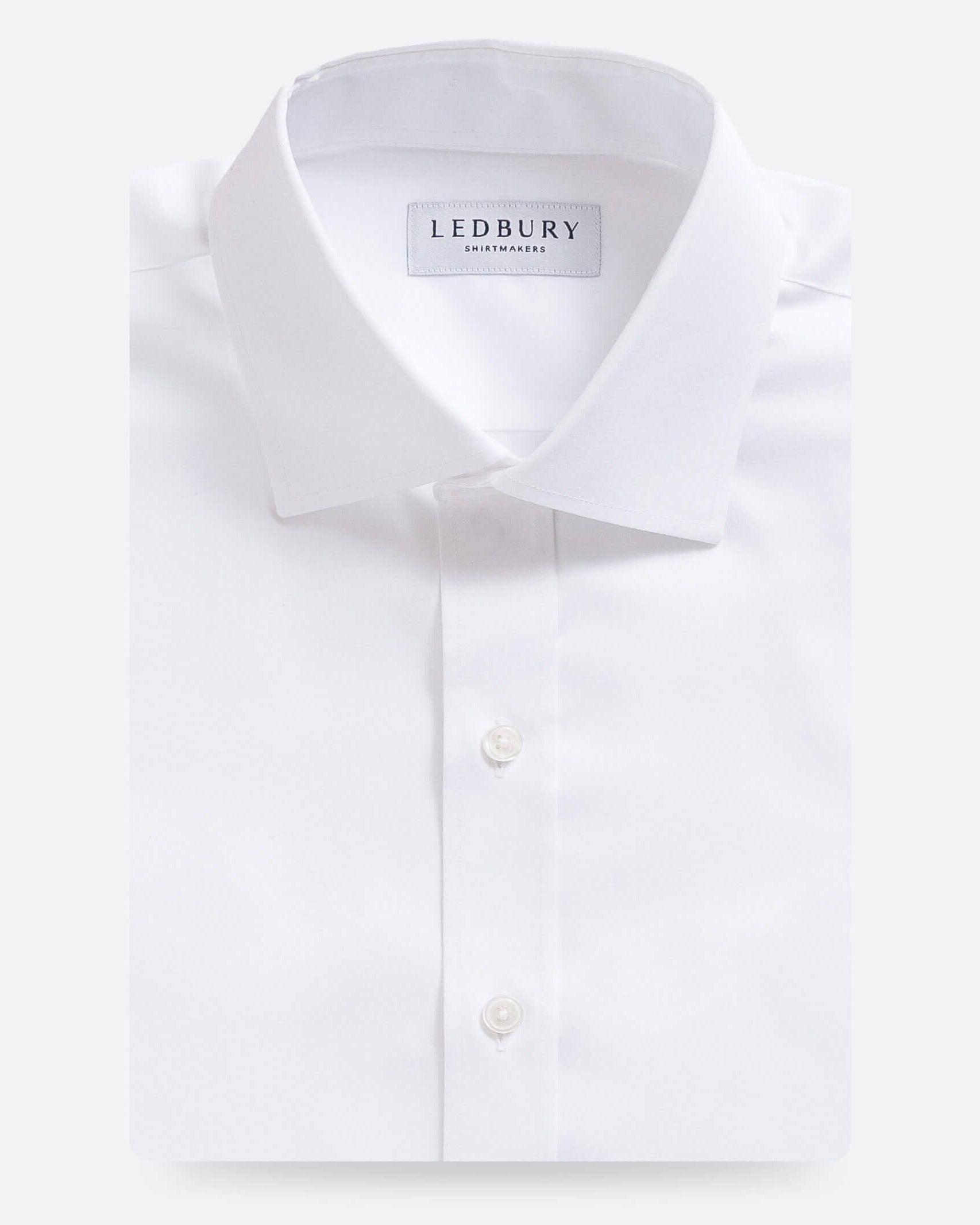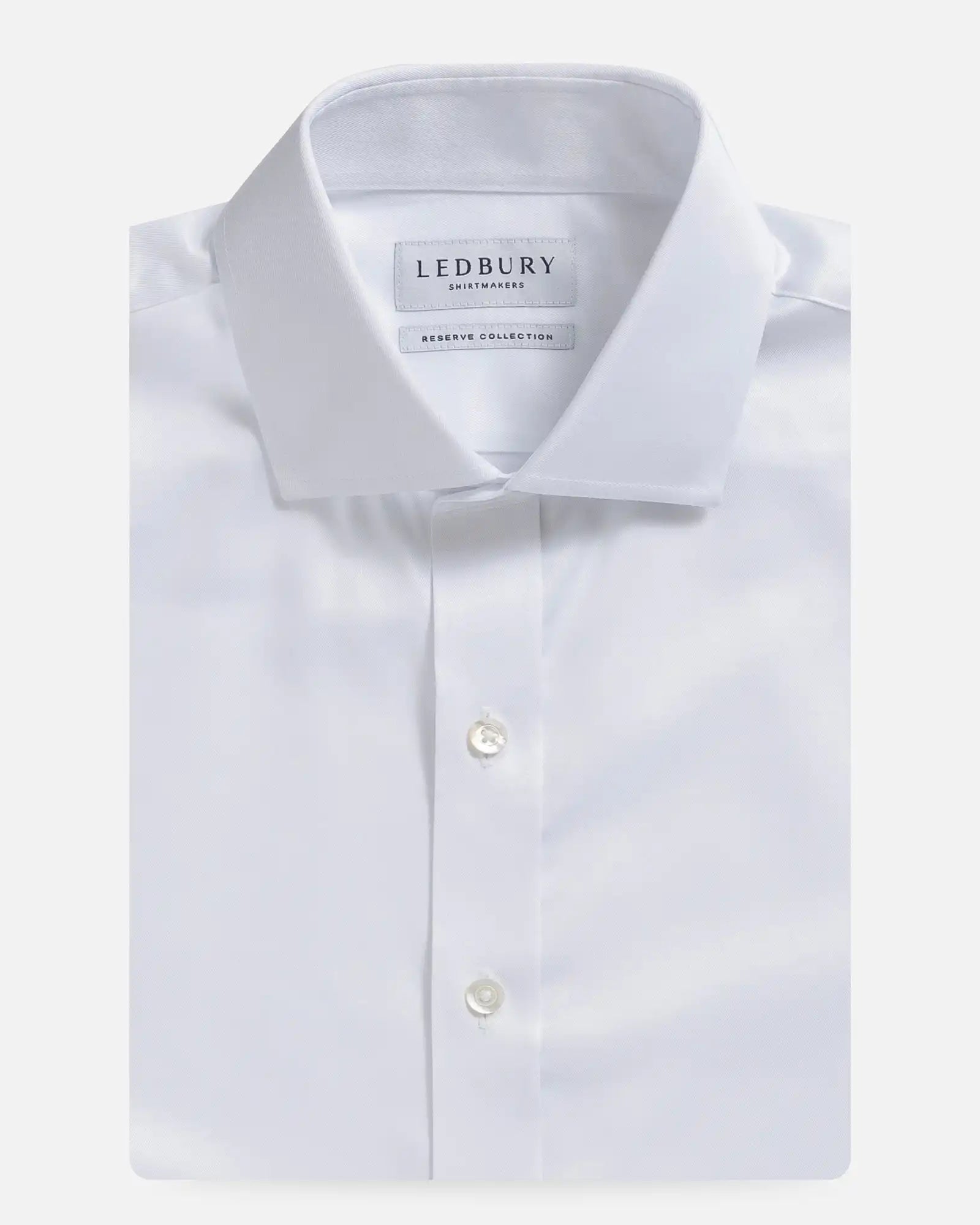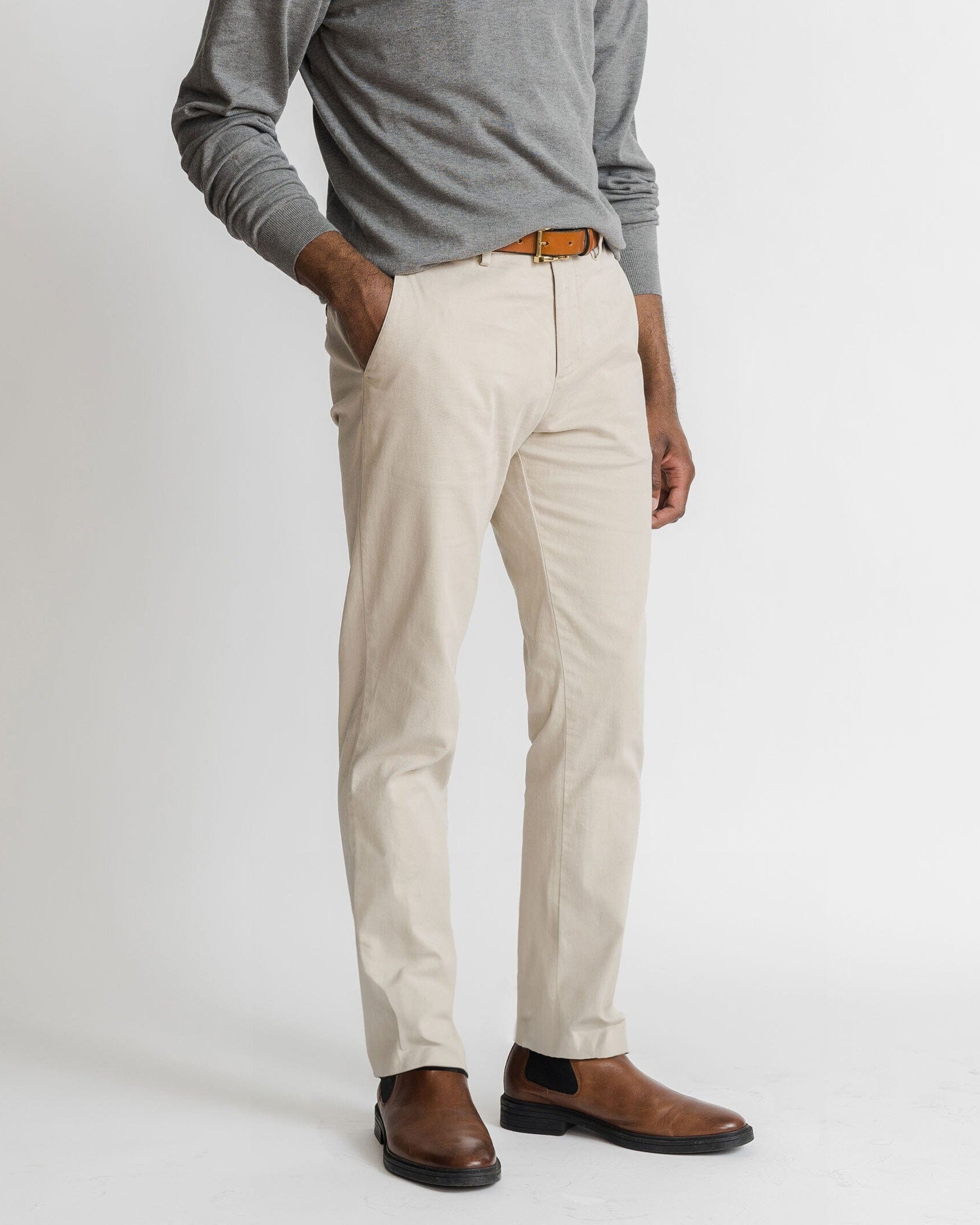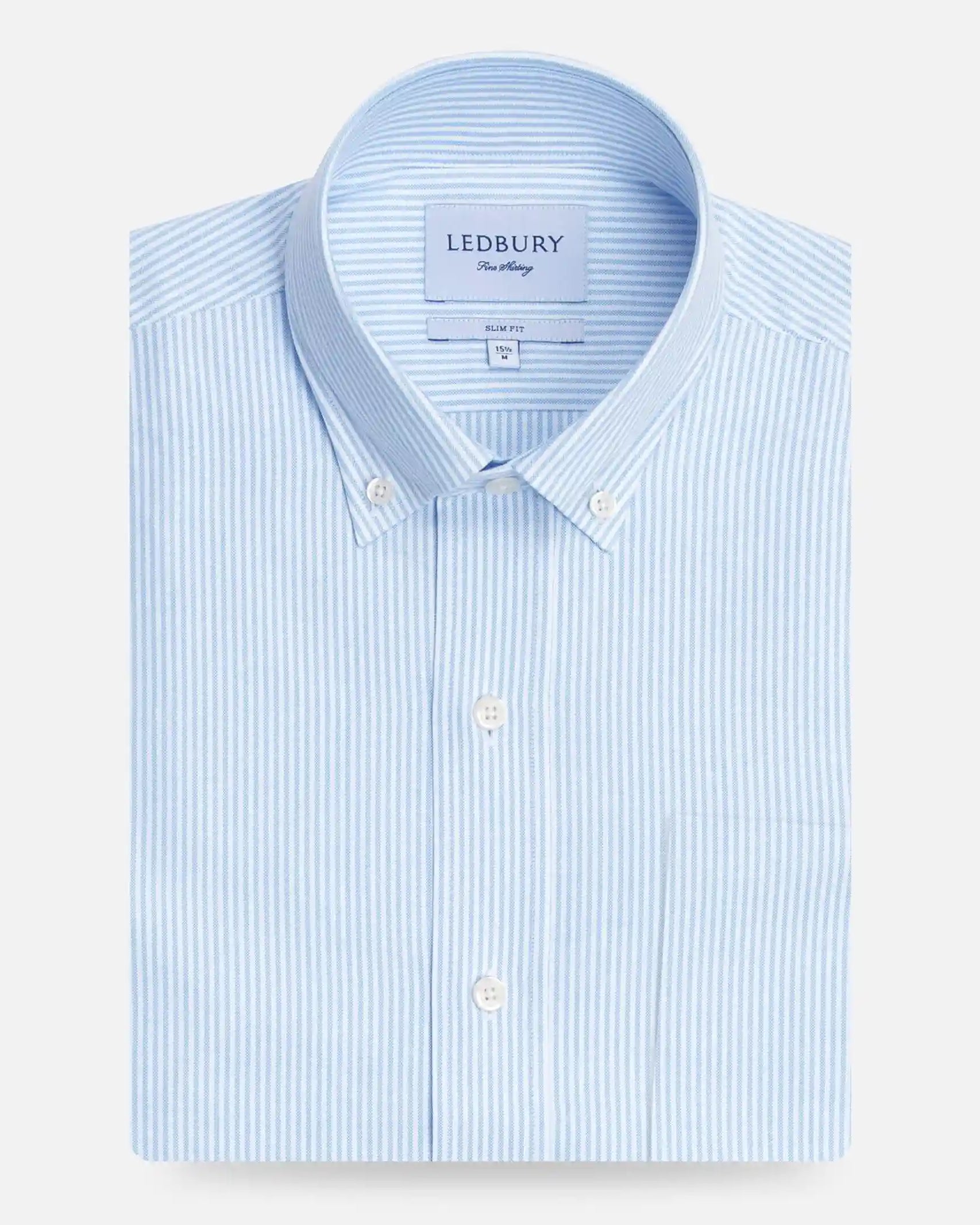






Sterling Hundley is one of our four featured artists in the lookbook for our current collection of Short Run Shirting. Sterling is an incredibly accomplished artist whose work has been featured in numerous publications including GQ, The New York Times and Rolling Stone. After the photoshoot, we caught up with Sterling to talk about art, inspiration, and his careers in both commercial illustration and fine arts.
When did you first realize your artistic talent?
Sometime during early elementary school - it was around Thanksgiving and my teacher asked us to draw pictures that related to the holiday. In a non-arrogant way, I remember looking at everyone's work and I knew that mine was better. Before I knew it, the teacher and entire class were looking at my drawing and telling me how good it was. This was my first experience of "assumption meeting reinforcement," which has become a pattern throughout my professional career that I feel very thankful for experiencing. I know when I really nail something and every time I've had this feeling, it's been a major turning point in my work where it has received national or international acclaim - which reinforces that assumption.
Speaking of awards, you’ve received considerable acclaim from the illustration community and your work has been featured in publications that some illustrators can only dream of. Before all of this, when was the moment the momentum behind your work started to take off?
Three years after I graduated from college, I had a meeting with
Rolling Stone magazine and handed them my portfolio. Fred Woodward, the art director at the time, looked at my portfolio for maybe 10 seconds and then handed it back to me. He told me that my work was too similar to another artist and lacked my own style. Fred told me that they kept a postcard of a black and white line drawing on their bulletin board that I sent them while I was still in school and they hadn’t seen anything like that since. Luckily, they asked me to send them more samples of my work. A few weeks later, Fred gave me a call and asked if I could do an illustration for the table of contents page for the issue that marked the 10
th anniversary of Kurt Cobain’s death.
You had an incredibly successful career as a commercial illustrator for nearly 15 years, why did you decide to give this up to focus on fine art painting?
Illustration answers a question while painting asks the question. In fine arts, there is more room for dialogue between the viewer and the painting. In fine art, you are able to be more complex and mysterious than an illustration on a page of a magazine. If someone buys a painting that lacks complexity, they’re going to get bored with this piece very quickly. With fine art, you have an opportunity to explore one idea over multiple pieces of work and at a larger scale.
Through researching your career and progression of your work, I can tell you are incredibly driven.
I love working. Art is the thing in my life that dictates my time and commitment. When you're creative, you just can't close Pandora's box. I work beyond fatigue, which it has taken its toll over the years. I’m getting some perspective as I get older that my career isn’t a sprint, but a marathon. I've been really fortunate in my life to find the visual arts as something that pique my curiosity.
You also happen to be a very sought after professor among students in VCU’s Communication Arts Department, what do you get out of teaching?
I think I'm kind of hard-wired to wanting to help people. More than empathy, I try to take action when I can use my resources to help other people. Becoming a professor was really a by-product more than a goal. I have a job to communicate my knowledge and experience to my students, and I tell them that they have a responsibility to keep me relevant. I want them to share new technology, politics, etc, and then I share my thoughts and experience. Maybe two or three times a semester, I can see when the light bulbs go off in a student’s head when I’ve relayed information in a way that they are able to really get. As a professor, this is the closest thing you get to a high.
What serves as inspiration for your work?
My influences artistically are everything from Bernini to Picasso. This is a huge range and there are artists whose work I don't respond to aesthetically at all, but then I start to read about the theory and concept behind their work and I find ways of bringing this into my own work. One of the things that I believe to be true for artists is that we are here to quote the time in which we live. Bigger themes might be universal, which allows people to connect to a piece of work on an emotional level, but how we frame it is where the distinction lies. It relates to life. Life inspires art and art informs and documents life. It's perpetual with the way they advance one another.
You’ve covered a considerable amount of ground in your career, how do you set your goals for moving forward?
I wanted my 20s to be focused to illustration, my 30s to be dedicated on painting, and my 40s to be focused on writing. I'm a bit behind the curve and I think those things will ultimately dove tail with one another and I'll just be an artist. Time is all self-motivated. With content, the hardest part is figuring out what matters and the scale - how big or small you want the painting to be. The idea that you have to build your own infrastructure is a more difficult problem to solve. I want to know what I’m moving towards because I’m trying to accomplish something. I think you have to take whatever your fears are in life and challenge them. If you face your fears, you can actually use that to propel you.
To learn more about Sterling and see more of his work, visit his
website and as well as his
blog. Sterling also released a retrospective of his work a couple of years ago titled
Blue Collar/White Collar, and is available on amazon.com.






 Sterling Hundley is one of our four featured artists in the lookbook for our current collection of Short Run Shirting. Sterling is an incredibly accomplished artist whose work has been featured in numerous publications including GQ, The New York Times and Rolling Stone. After the photoshoot, we caught up with Sterling to talk about art, inspiration, and his careers in both commercial illustration and fine arts.
When did you first realize your artistic talent?
Sometime during early elementary school - it was around Thanksgiving and my teacher asked us to draw pictures that related to the holiday. In a non-arrogant way, I remember looking at everyone's work and I knew that mine was better. Before I knew it, the teacher and entire class were looking at my drawing and telling me how good it was. This was my first experience of "assumption meeting reinforcement," which has become a pattern throughout my professional career that I feel very thankful for experiencing. I know when I really nail something and every time I've had this feeling, it's been a major turning point in my work where it has received national or international acclaim - which reinforces that assumption.
Speaking of awards, you’ve received considerable acclaim from the illustration community and your work has been featured in publications that some illustrators can only dream of. Before all of this, when was the moment the momentum behind your work started to take off?
Three years after I graduated from college, I had a meeting with Rolling Stone magazine and handed them my portfolio. Fred Woodward, the art director at the time, looked at my portfolio for maybe 10 seconds and then handed it back to me. He told me that my work was too similar to another artist and lacked my own style. Fred told me that they kept a postcard of a black and white line drawing on their bulletin board that I sent them while I was still in school and they hadn’t seen anything like that since. Luckily, they asked me to send them more samples of my work. A few weeks later, Fred gave me a call and asked if I could do an illustration for the table of contents page for the issue that marked the 10th anniversary of Kurt Cobain’s death.
You had an incredibly successful career as a commercial illustrator for nearly 15 years, why did you decide to give this up to focus on fine art painting?
Illustration answers a question while painting asks the question. In fine arts, there is more room for dialogue between the viewer and the painting. In fine art, you are able to be more complex and mysterious than an illustration on a page of a magazine. If someone buys a painting that lacks complexity, they’re going to get bored with this piece very quickly. With fine art, you have an opportunity to explore one idea over multiple pieces of work and at a larger scale.
Through researching your career and progression of your work, I can tell you are incredibly driven.
I love working. Art is the thing in my life that dictates my time and commitment. When you're creative, you just can't close Pandora's box. I work beyond fatigue, which it has taken its toll over the years. I’m getting some perspective as I get older that my career isn’t a sprint, but a marathon. I've been really fortunate in my life to find the visual arts as something that pique my curiosity.
You also happen to be a very sought after professor among students in VCU’s Communication Arts Department, what do you get out of teaching?
I think I'm kind of hard-wired to wanting to help people. More than empathy, I try to take action when I can use my resources to help other people. Becoming a professor was really a by-product more than a goal. I have a job to communicate my knowledge and experience to my students, and I tell them that they have a responsibility to keep me relevant. I want them to share new technology, politics, etc, and then I share my thoughts and experience. Maybe two or three times a semester, I can see when the light bulbs go off in a student’s head when I’ve relayed information in a way that they are able to really get. As a professor, this is the closest thing you get to a high.
What serves as inspiration for your work?
My influences artistically are everything from Bernini to Picasso. This is a huge range and there are artists whose work I don't respond to aesthetically at all, but then I start to read about the theory and concept behind their work and I find ways of bringing this into my own work. One of the things that I believe to be true for artists is that we are here to quote the time in which we live. Bigger themes might be universal, which allows people to connect to a piece of work on an emotional level, but how we frame it is where the distinction lies. It relates to life. Life inspires art and art informs and documents life. It's perpetual with the way they advance one another.
You’ve covered a considerable amount of ground in your career, how do you set your goals for moving forward?
I wanted my 20s to be focused to illustration, my 30s to be dedicated on painting, and my 40s to be focused on writing. I'm a bit behind the curve and I think those things will ultimately dove tail with one another and I'll just be an artist. Time is all self-motivated. With content, the hardest part is figuring out what matters and the scale - how big or small you want the painting to be. The idea that you have to build your own infrastructure is a more difficult problem to solve. I want to know what I’m moving towards because I’m trying to accomplish something. I think you have to take whatever your fears are in life and challenge them. If you face your fears, you can actually use that to propel you.
To learn more about Sterling and see more of his work, visit his website and as well as his blog. Sterling also released a retrospective of his work a couple of years ago titled Blue Collar/White Collar, and is available on amazon.com.
Sterling Hundley is one of our four featured artists in the lookbook for our current collection of Short Run Shirting. Sterling is an incredibly accomplished artist whose work has been featured in numerous publications including GQ, The New York Times and Rolling Stone. After the photoshoot, we caught up with Sterling to talk about art, inspiration, and his careers in both commercial illustration and fine arts.
When did you first realize your artistic talent?
Sometime during early elementary school - it was around Thanksgiving and my teacher asked us to draw pictures that related to the holiday. In a non-arrogant way, I remember looking at everyone's work and I knew that mine was better. Before I knew it, the teacher and entire class were looking at my drawing and telling me how good it was. This was my first experience of "assumption meeting reinforcement," which has become a pattern throughout my professional career that I feel very thankful for experiencing. I know when I really nail something and every time I've had this feeling, it's been a major turning point in my work where it has received national or international acclaim - which reinforces that assumption.
Speaking of awards, you’ve received considerable acclaim from the illustration community and your work has been featured in publications that some illustrators can only dream of. Before all of this, when was the moment the momentum behind your work started to take off?
Three years after I graduated from college, I had a meeting with Rolling Stone magazine and handed them my portfolio. Fred Woodward, the art director at the time, looked at my portfolio for maybe 10 seconds and then handed it back to me. He told me that my work was too similar to another artist and lacked my own style. Fred told me that they kept a postcard of a black and white line drawing on their bulletin board that I sent them while I was still in school and they hadn’t seen anything like that since. Luckily, they asked me to send them more samples of my work. A few weeks later, Fred gave me a call and asked if I could do an illustration for the table of contents page for the issue that marked the 10th anniversary of Kurt Cobain’s death.
You had an incredibly successful career as a commercial illustrator for nearly 15 years, why did you decide to give this up to focus on fine art painting?
Illustration answers a question while painting asks the question. In fine arts, there is more room for dialogue between the viewer and the painting. In fine art, you are able to be more complex and mysterious than an illustration on a page of a magazine. If someone buys a painting that lacks complexity, they’re going to get bored with this piece very quickly. With fine art, you have an opportunity to explore one idea over multiple pieces of work and at a larger scale.
Through researching your career and progression of your work, I can tell you are incredibly driven.
I love working. Art is the thing in my life that dictates my time and commitment. When you're creative, you just can't close Pandora's box. I work beyond fatigue, which it has taken its toll over the years. I’m getting some perspective as I get older that my career isn’t a sprint, but a marathon. I've been really fortunate in my life to find the visual arts as something that pique my curiosity.
You also happen to be a very sought after professor among students in VCU’s Communication Arts Department, what do you get out of teaching?
I think I'm kind of hard-wired to wanting to help people. More than empathy, I try to take action when I can use my resources to help other people. Becoming a professor was really a by-product more than a goal. I have a job to communicate my knowledge and experience to my students, and I tell them that they have a responsibility to keep me relevant. I want them to share new technology, politics, etc, and then I share my thoughts and experience. Maybe two or three times a semester, I can see when the light bulbs go off in a student’s head when I’ve relayed information in a way that they are able to really get. As a professor, this is the closest thing you get to a high.
What serves as inspiration for your work?
My influences artistically are everything from Bernini to Picasso. This is a huge range and there are artists whose work I don't respond to aesthetically at all, but then I start to read about the theory and concept behind their work and I find ways of bringing this into my own work. One of the things that I believe to be true for artists is that we are here to quote the time in which we live. Bigger themes might be universal, which allows people to connect to a piece of work on an emotional level, but how we frame it is where the distinction lies. It relates to life. Life inspires art and art informs and documents life. It's perpetual with the way they advance one another.
You’ve covered a considerable amount of ground in your career, how do you set your goals for moving forward?
I wanted my 20s to be focused to illustration, my 30s to be dedicated on painting, and my 40s to be focused on writing. I'm a bit behind the curve and I think those things will ultimately dove tail with one another and I'll just be an artist. Time is all self-motivated. With content, the hardest part is figuring out what matters and the scale - how big or small you want the painting to be. The idea that you have to build your own infrastructure is a more difficult problem to solve. I want to know what I’m moving towards because I’m trying to accomplish something. I think you have to take whatever your fears are in life and challenge them. If you face your fears, you can actually use that to propel you.
To learn more about Sterling and see more of his work, visit his website and as well as his blog. Sterling also released a retrospective of his work a couple of years ago titled Blue Collar/White Collar, and is available on amazon.com.










